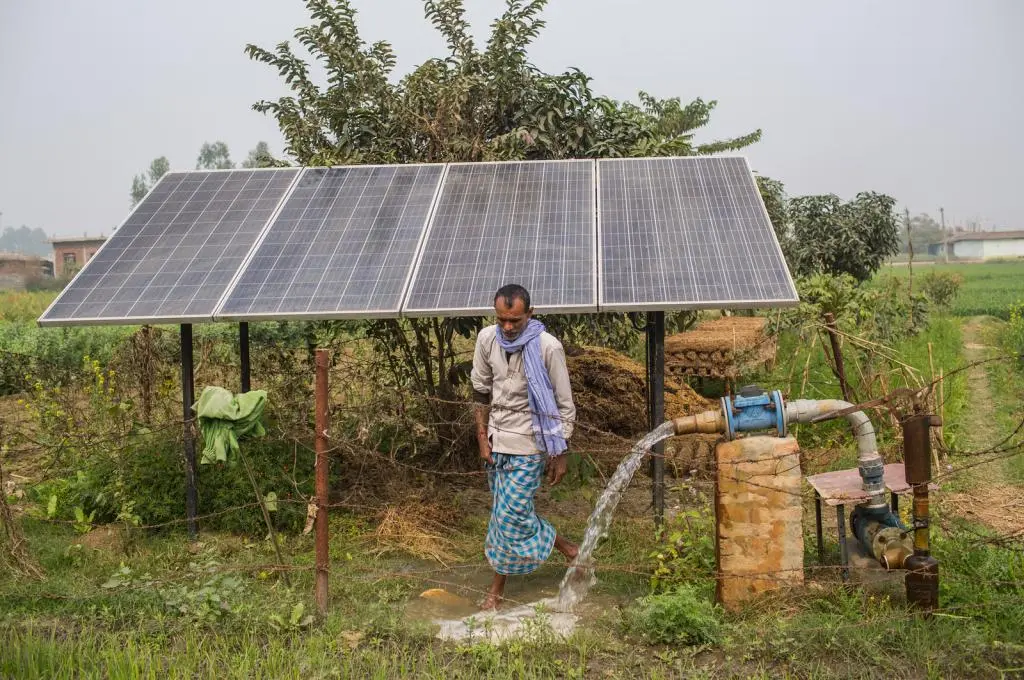Our energy system in 2050 will look dramatically different from what we have today. Renewable energy (RE) will hold a majority share in the energy mix; our grid will be smarter and more efficient; and electric vehicles (EVs) will outsell internal combustion engine (ICE) vehicles, which are powered by conventional oil-derived fuels such as gasoline or diesel. Clearly, RE is the sector for the future.
But what would a future-fit RE system look like?
India’s RE landscape is already expanding at a rapid pace, with stakeholders such as investors, developers, and buyers actively aligning with the country’s ambitious goals. As of August 2024, India’s RE sources, including large hydropower, have a combined installed capacity of 199.52 GW. The government has also sanctioned 50 solar parks across 12 states. The RE sector continues to attract significant investment as well. The Union Budget 2024–25 has allocated INR 10,000 crore to a centrally sponsored scheme for solar power grid projects, marking a 110 percent increase from the previous year’s budget. Additionally, the Union Cabinet has approved a viability gap funding (VGF) scheme for offshore wind energy projects. With a total outlay of INR 7,453 crore, the scheme represents a significant step towards implementing the national policy for offshore wind energy.
However, as RE expands, it will have social and environmental implications—on land and water, and on local communities and the workforce.
A case in point is India’s first utility-scale solar park in Charanka, Gujarat. Reports suggest that in the 12 years since the project’s inception, there has been a reduction in grazing areas, diminished water availability due to extensive groundwater extraction for the park’s cleaning and maintenance, and limited livelihood opportunities for locals. Similarly, residents of Gujarat’s Kachchh district have pointed out that the construction of a wind farm in Jangi village has impacted bird migration patterns, lowered groundwater levels, and decreased land availability. Additionally, the local community has reported health concerns linked to the proximity of the wind turbines.
If not dealt with proactively, the unintended impacts of RE might pose an even bigger problem to the pace of capacity addition needed, undermining the long-term sustainability of RE projects and the sector itself. As stakeholders begin to recognise these risks, an important question arises:What is the business case for responsible RE?
The following sections aim to address this key question.
ESG is only a starting point, not the ambition
Environmental, social, and governance (ESG) reporting can be an important first step for any company, investor, or procurer. While there is an increase in ESG-related action across the sector, it shouldn’t be the only step that value-led companies should take. Here are some reasons why.
Compliance mindset: Compliance with ESG standards often fosters a checkbox mentality, where businesses focus on meeting minimum requirements rather than pursuing transformative impact. For instance, a company may implement basic energy-efficient practices to meet regulations but neglect innovative solutions that could significantly reduce its carbon footprint. While compliance is crucial for attracting investment, adhering to regulatory and legal requirements, and building organisational capacity, a purely compliance-driven mindset risks overlooking opportunities for deeper, systemic, and long-term change that benefits both the organisation and the communities it serves.
Limited scope: ESG frameworks are often linear, simplistic, and designed for quick implementation. While they provide a useful starting point, they can fall short when it comes to addressing complex, interconnected challenges as well as understanding long-term, intergenerational impacts. For instance, while fair land compensation and alternative livelihood opportunities can build resilience, ESG frameworks typically overlook the emotional and cultural connections communities have with their land. In some cases, they also fail to consider the effects of land-use changes on seasonal pastoralists, whose livelihoods are intricately tied to these landscapes.
No proactive action: Most ESG frameworks are used for reporting or measuring impacts on the environment, governance, and society after project development, rather than for driving decision-making and long-term planning from the outset. This means that organisations are often entangled in lengthy reporting processes and end up spending comparatively less time in learning about the value they are creating, and how can they fundamentally transform businesses practices.
Inconsistent methodologies: The multitude of methodologies used by different ESG rating institutions makes it almost impossible to compare organisations across ESG parameters.
The RE landscape provides an opportunity to go beyond ESG compliance and risk mitigation, and towards regeneration, resilience, and justice.

Ambitious action and proactive mechanisms are good for business
There is often a perception that calls for ambitious, value-led action will lead to additional environmental and social considerations, extending project timelines and increasing upfront costs. Further, companies often ask questions such as, “If our competitors aren’t following additional metrices, what is the incentive for us to adopt them?”
However, we are increasingly seeing delays in project implementation due to a lack of proactive and comprehensive environmental and social considerations, which can lead to issues during commissioning or operation. Hence, the risk of not considering responsible RE mechanisms will increase over the years to come as land acquisition becomes increasingly complex, communities become more aware, the workforce faces the impacts of extreme weather, and unmanaged waste builds up.
Enhanced transparency, accountability, and long-term value can create responsible business mechanisms to ensure consistent and timely returns for risk-averse returns investors. This in turn allows companies to better attract investment, a healthier and more resilient workforce, and engaged communities. Compliance becomes a by-product of all of this.
Industry needs to lead ambitious action; enabling policy will follow
Emerging evidence suggests that industry associations play an important role in proactively identifying current and future challenges in the sector and establishing task forces to shape a response. For instance, the India Agrivoltaics Alliance supports research and innovations to scale agrivoltaics (agriculture integrated with solar photovoltaic) in areas where suitable land is scarce. Similarly, the World Economic Forum’s Responsible Renewables Infrastructure Initiative, launched in October 2024, represents a multistakeholder collaboration aimed at accelerating RE deployment while ensuring fair outcomes and protecting biodiversity.
Developers, including those involved in the Responsible Energy Initiative—such as Fourth Partner Energy and Hero Future Energies—are embedding sustainable practices directly into their operations. These companies are prioritising long-term community development and groundwater management near their project sites, moving beyond traditional CSR initiatives to integrate sustainability into their daily business activities.
On the investment front, British International Investment (BII), a development finance institution, is setting a benchmark with its Policy on Responsible Investing, which provides a robust framework to guide its investees toward sustainable practices. The policy addresses key environmental and social risks—including pollution, resource use (for example, fossil fuels), and climate change—while prioritising meaningful engagement with vulnerable groups such as indigenous peoples. Additionally, it emphasises strong governance systems to mitigate risks such as corruption, fraud, and tax evasion.
India’s journey towards meeting its RE targets necessitates that responsible, sustainable practices guide the industry. The country is not only positioned to be a major player in the global RE value chain but can also serve as an example of how resilience, community well-being, and regenerative practices can be central to the energy transition. As India competes with global giants in the RE supply chain, such as China, it is more critical than ever to focus on moving away from extractive practices to those that regenerate the environment.
For Indian businesses, this is an opportunity to build long-term value for all stakeholders, which will, in turn, offer better financial returns and prosperity to both stakeholders and shareholders. Ultimately, for the RE sector to be future-fit and resilient, the shift towards responsible energy must be the cornerstone of its development.
—
Know more
- Read this article to learn more about the limitations of ESG.
- Read this article to learn why centering human rights is critical in the development of renewable energy.
- Read this article to understand why India’s rapid growth in solar power must prioritise equity and inclusivity for a truly sustainable future.






